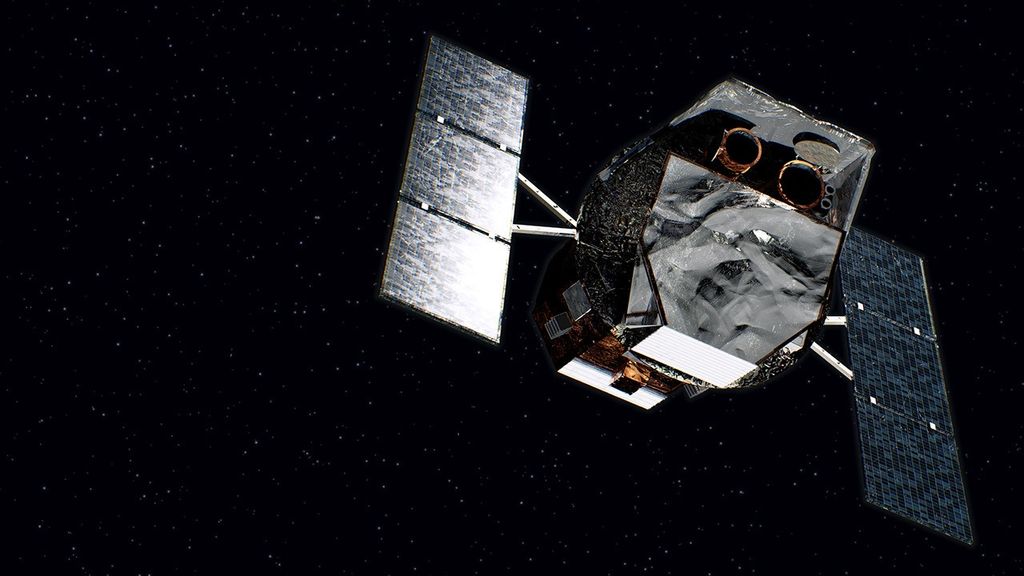Flickering Antares
| PIA Number | PIA09829 |
|---|---|
| Language |
|
A point of light flickers behind Saturn's rings as multiple instruments on the Cassini spacecraft observe a stellar occultation of Antares (or alpha Scorpii).
Such observations are designed to understand the fine-scale structure of the rings. Scientists look at variations in the observed brightness of the star (whose actual brightness is well known) to determine the opacity of the rings in different places.
Among other things, Cassini's prior stellar occultations have been used to examine density and bending waves induced in the A ring by Saturn's various moons.
This view looks toward the unilluminated side of the rings from about 34 degrees above the ringplane.
The image was taken in visible light with the Cassini spacecraft narrow-angle camera on Jan. 3, 2008. The view was obtained at a distance of approximately 541,000 kilometers (336,000 miles) from Saturn. Image scale is about 4 kilometers (3 miles) per pixel.
The Cassini-Huygens mission is a cooperative project of NASA, the European Space Agency and the Italian Space Agency. The Jet Propulsion Laboratory, a division of the California Institute of Technology in Pasadena, manages the mission for NASA's Science Mission Directorate, Washington, D.C. The Cassini orbiter and its two onboard cameras were designed, developed and assembled at JPL. The imaging operations center is based at the Space Science Institute in Boulder, Colo.
For more information about the Cassini-Huygens mission visit http://saturn.jpl.nasa.gov . The Cassini imaging team homepage is at http://ciclops.org .
Credit: NASA/JPL/Space Science Institute




























